Antidepressants versus placebo for panic disorder in adults
- PMID: 29620793
- PMCID: PMC6494573
- DOI: 10.1002/14651858.CD010676.pub2
Antidepressants versus placebo for panic disorder in adults
Abstract
Background: Panic disorder is characterised by repeated, unexpected panic attacks, which represent a discrete period of fear or anxiety that has a rapid onset, reaches a peak within 10 minutes, and in which at least four of 13 characteristic symptoms are experienced, including racing heart, chest pain, sweating, shaking, dizziness, flushing, stomach churning, faintness and breathlessness. It is common in the general population with a lifetime prevalence of 1% to 4%. The treatment of panic disorder includes psychological and pharmacological interventions. Amongst pharmacological agents, the National Institute for Health and Care Excellence (NICE) and the British Association for Psychopharmacology consider antidepressants, mainly selective serotonin reuptake inhibitors (SSRIs), as the first-line treatment for panic disorder, due to their more favourable adverse effect profile over monoamine oxidase inhibitors (MAOIs) and tricyclic antidepressants (TCAs). Several classes of antidepressants have been studied and compared, but it is still unclear which antidepressants have a more or less favourable profile in terms of effectiveness and acceptability in the treatment of this condition.
Objectives: To assess the effects of antidepressants for panic disorder in adults, specifically:1. to determine the efficacy of antidepressants in alleviating symptoms of panic disorder, with or without agoraphobia, in comparison to placebo;2. to review the acceptability of antidepressants in panic disorder, with or without agoraphobia, in comparison with placebo; and3. to investigate the adverse effects of antidepressants in panic disorder, with or without agoraphobia, including the general prevalence of adverse effects, compared to placebo.
Search methods: We searched the Cochrane Common Mental Disorders' (CCMD) Specialised Register, and CENTRAL, MEDLINE, EMBASE and PsycINFO up to May 2017. We handsearched reference lists of relevant papers and previous systematic reviews.
Selection criteria: All double-blind, randomised, controlled trials (RCTs) allocating adults with panic disorder to antidepressants or placebo.
Data collection and analysis: Two review authors independently checked eligibility and extracted data using a standard form. We entered data into Review Manager 5 using a double-check procedure. Information extracted included study characteristics, participant characteristics, intervention details and settings. Primary outcomes included failure to respond, measured by a range of response scales, and treatment acceptability, measured by total number of dropouts for any reason. Secondary outcomes included failure to remit, panic symptom scales, frequency of panic attacks, agoraphobia, general anxiety, depression, social functioning, quality of life and patient satisfaction, measured by various scales as defined in individual studies. We used GRADE to assess the quality of the evidence for each outcome MAIN RESULTS: Forty-one unique RCTs including 9377 participants overall, of whom we included 8252 in the 49 placebo-controlled arms of interest (antidepressant as monotherapy and placebo alone) in this review. The majority of studies were of moderate to low quality due to inconsistency, imprecision and unclear risk of selection and performance bias.We found low-quality evidence that revealed a benefit for antidepressants as a group in comparison with placebo in terms of efficacy measured as failure to respond (risk ratio (RR) 0.72, 95% confidence interval (CI) 0.66 to 0.79; participants = 6500; studies = 30). The magnitude of effect corresponds to a number needed to treat for an additional beneficial outcome (NNTB) of 7 (95% CI 6 to 9): that means seven people would need to be treated with antidepressants in order for one to benefit. We observed the same finding when classes of antidepressants were compared with placebo.Moderate-quality evidence suggested a benefit for antidepressants compared to placebo when looking at number of dropouts due to any cause (RR 0.88, 95% CI 0.81 to 0.97; participants = 7850; studies = 30). The magnitude of effect corresponds to a NNTB of 27 (95% CI 17 to 105); treating 27 people will result in one person fewer dropping out. Considering antidepressant classes, TCAs showed a benefit over placebo, while for SSRIs and serotonin-norepinephrine reuptake inhibitor (SNRIs) we observed no difference.When looking at dropouts due to adverse effects, which can be considered as a measure of tolerability, we found moderate-quality evidence showing that antidepressants as a whole are less well tolerated than placebo. In particular, TCAs and SSRIs produced more dropouts due to adverse effects in comparison with placebo, while the confidence interval for SNRI, noradrenergic reuptake inhibitors (NRI) and other antidepressants were wide and included the possibility of no difference.
Authors' conclusions: The identified studies comprehensively address the objectives of the present review.Based on these results, antidepressants may be more effective than placebo in treating panic disorder. Efficacy can be quantified as a NNTB of 7, implying that seven people need to be treated with antidepressants in order for one to benefit. Antidepressants may also have benefit in comparison with placebo in terms of number of dropouts, but a less favourable profile in terms of dropout due to adverse effects. However, the tolerability profile varied between different classes of antidepressants.The choice of whether antidepressants should be prescribed in clinical practice cannot be made on the basis of this review.Limitations in results include funding of some studies by pharmaceutical companies, and only assessing short-term outcomes.Data from the present review will be included in a network meta-analysis of psychopharmacological treatment in panic disorder, which will hopefully provide further useful information on this issue.
Conflict of interest statement
IB: none MC: none AC is supported by the NIHR Oxford Cognitive Health Clinical Research Facility and was expert witness for Accord Healthcare for a patent issue about quetiapine extended release. FG: none GG: none MK: none GT: none TAF has received lecture fees from Eli Lilly, Janssen, Meiji, MSD, Otsuka, Pfizer and Tanabe‐Mitsubishi, and consultancy fees from Sekisui Chemicals and Takeda Science Foundation. He has received royalties from Igaku‐Shoin and Nihon Bunka Kagaku‐sha publishers. He has received grant or research support from the Japanese Ministry of Education, Science, and Technology, the Japanese Ministry of Health, Labour and Welfare, the Japan Society for the Promotion of Science, the Japan Foundation for Neuroscience and Mental Health, Mochida and Tanabe‐Mitsubishi. He is diplomate of the Academy of Cognitive Therapy. CB: none
Figures



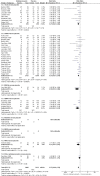
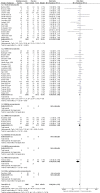
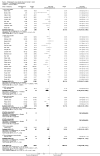
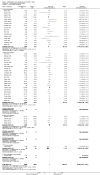

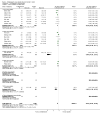
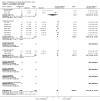
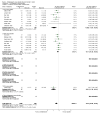
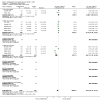
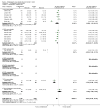

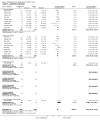
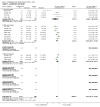
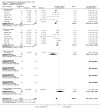





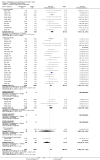




















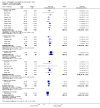














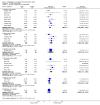
































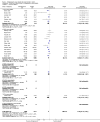
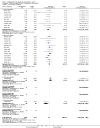



















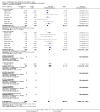







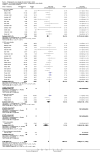







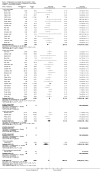
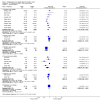

Update of
- doi: 10.1002/14651858.CD010676
References
References to studies included in this review
Asnis 2001 {published data only}
-
- Asnis GM, Hameedi FA, Goddard AW, Potkin SG, Black D, Jameel M, et al. Fluvoxamine in the treatment of panic disorder: a multi‐center, double‐blind, placebo‐controlled study in outpatients. Psychiatry Research 2001;103:1‐14. - PubMed
Ballenger 1998 {published and unpublished data}
-
- Ballenger JC, Wheadon DE, Steiner M, Bushnell W, Gergel IP. Double‐blind, fixed‐dose, placebo‐controlled study of paroxetine in the treatment of panic disorder. American Journal of Psychiatry 1998;155:36‐42. - PubMed
-
- GlaxoSmithKline. A double‐blind, placebo‐controlled, multicenter study of fixed doses of paroxetine (10, 20 and 40 mg) given as a single oral dose daily, in the treatment of panic disorder. GSK‐Clinical Study Register (www.gskclinicalstudyregister.com) 1994. [No.:MY1047/BRL‐029060/1/CPMS‐120]
Barlow 2000 {published data only}
-
- Barlow DH, Gorman JM, Shear MK, Woods SW. Cognitive‐behavioral therapy, imipramine, or their combination for panic disorder: a randomized controlled trial. JAMA 2000;283(19):2529‐36. - PubMed
-
- Marcus SM, Gorman J, Shear MK, Lewin D, Martinez J, Ray S, et al. A comparison of medication side effect reports by panic disorder patients with and without concomitant cognitive behavior therapy. American Journal of Psychiatry 2007;164(2):273‐5. - PubMed
-
- Shear MK, Houck P, Greeno C, Masters S. Emotion‐focused psychotherapy for patients with panic disorder. American Journal of Psychiatry 2001;158(12):1993‐8. - PubMed
Bergink 2005 {published data only}
-
- Bergink V, Westenberg HGM. Metabotropic glutamate II receptor agonists in panic disorder: a double‐blind clinical trial with LY354740. International Clinical Psychopharmacology 2005;20(6):291‐3. - PubMed
Black 1993 {published data only}
-
- Black DW, Wesner R, Bowers W, Gabel J. A comparison of fluvoxamine, cognitive therapy and placebo in the treatment of panic disorder. Archives of General Psychiatry 1993;50:44‐50. - PubMed
Bradwejn 2005 {published data only}
-
- Bradwejn J, Ahokas A, Stein DJ, Salinas E, Emilien G, Whitaker T. Venlafaxine extended‐release capsules in panic disorder: flexible‐dose, double‐blind, placebo‐controlled study. The British Journal of Psychiatry 2005;187:352‐9. - PubMed
Broocks 1998 {published data only}
-
- Bandelow B, Broocks A, George A, Meyer T, Pralle L, Bartmann U, et al. The use of the panic and agoraphobia scale (P & A) in a controlled clinical trial. Pharmacopsychiatry 2000;33:174‐81. - PubMed
-
- Broocks A, Bandelow B, Pekrun G, George A, Meyer T, Bartmann U, et al. Comparison of aerobic exercise, clomipramine and placebo in the treatment of panic disorder. American Journal of Psychiatry 1998;155:603‐9. - PubMed
-
- Broocks A, Stevinson C. Exercise may help treat panic disorder. Focus on Alternative and Complementary Therapies 1999;4(2):84‐5.
Caillard 1999 {published data only}
-
- Caillard V, Rouillon F, Viel JF, Markabi S, French University Antidepressants Group. Comparative effects of low and high doses of clomipramine and placebo in panic disorder: a double‐blind controlled study. Acta Psychiatrica Scandinavica 1999;99:51‐8. - PubMed
Cassano 1999 {published data only}
-
- Cassano G, Benkert O, Wade A, Lepola U, Bellodi L, Skoglund L, et al. A multicenter, double‐blind comparison of nefazodone and placebo in the treatment of panic disorder. European Neuropsychopharmacology 1999;9(Suppl 5):S250.
CNCPS 1992 {published data only}
-
- Albus M, Lecrubier Y, Maier W, Buller R, Rosenberg R, Hippius H. Drug treatment of panic disorder: early response to treatment as a predictor of final outcome. Acta Psychiatrica Scandinavica 1990;82(5):359‐65. - PubMed
-
- Albus M, Maier W, Shera D, Bech P. Consistencies and discrepancies in self‐ and observer‐rated anxiety scales. A comparison between the self‐ and observer‐rated Marks‐Sheehan scales. European Archives of Psychiatry and Clinical Neuroscience 1990;240(2):96‐102. - PubMed
-
- Andersch S, Hanson L, Hallstrom T. Panic disorder: a five‐year follow‐up study in 52 patients. European Journal of Psychiatry 1997;11(3):145‐55.
-
- Andersch S, Hetta J. A 15‐year follow‐up study of patients with panic disorder. European Psychiatry 2003;18(8):401‐8. - PubMed
-
- Andersch S, Rosenberg NK, Kullingsjö H, Ottosson JO, Bech P, Bruun‐Hansen J, et al. Efficacy and safety of alprazolam, imipramine and placebo in treating panic disorder. A Scandinavian multicenter study. Acta Psychiatrica Scandinavica. Supplementum 1991;365:18‐27. - PubMed
Den Boer 1990 {published data only}
-
- Boer JA, Westenberg HGM. Serotonin function in panic disorder: a double blind placebo controlled study with fluvoxamine and ritanserin. Psychopharmacology 1990;102:85‐94. - PubMed
-
- Westenberg HG, Boer JA. Selective monoamine uptake inhibitors and a serotonin antagonist in the treatment of panic disorder. Psychopharmacology Bulletin 1989;25(1):119‐23. - PubMed
Gentil 1993‐clo {published data only}
-
- Gentil V, Lotufo‐Neto F, Andrade L, Cordas T, Bernik M, Ramos R, et al. Clomipramine, a better reference drug for panic/agoraphobia. I. Effectiveness comparison with imipramine. Journal of Psychopharmacology 1993;7(4):316‐24. - PubMed
-
- Marcourakis T, Gorenstein C, Gentil V. Clomipramine, a better reference drug for panic/agoraphobia. II. Psychomotor and cognitive effects. Journal of Psychopharmacology 1993;7(4):325‐30. - PubMed
Gentil 1993‐imi {published data only}
-
- Gentil V, Lotufo‐Neto F, Andrade L, Cordas T, Bernik M, Ramos R, et al. Clomipramine, a better reference drug for panic/agoraphobia. I. Effectiveness comparison with imipramine. Journal of Psychopharmacology 1993;7(4):316‐24. - PubMed
-
- Marcourakis T, Gorenstein C, Gentil V. Clomipramine, a better reference drug for panic/agoraphobia. II. Psychomotor and cognitive effects. Journal of Psychopharmacology 1993;7(4):325‐30. - PubMed
GSK 1994 {unpublished data only}
-
- GlaxoSmithKline. A double‐blind, multicentered, flexible‐dose study of paroxetine, alprazolam and placebo in the treatment of panic disorder. GSK Clinical Study Register (www.gsk‐clinicalstudyregister.com) 1994/04. [Study No.:MY‐1048/BRL‐029060/1/CPMS‐223(PAR223)]
Hoehn‐Saric 1993 {published data only}
-
- Hoehn‐Saric R, McLeod DR, Hipsley PA. Effect of fluvoxamine on panic disorder. Journal of Clinical Psychopharmacology 1993;13(5):321‐26. - PubMed
Johnston 1995 {published data only}
-
- Johnston DG, Troyer IE, Whitsett SF, Dalby T. Clomipramine treatment and behaviour therapy with agoraphobic women. Canadian Journal of Psychiatry 1995;40(4):192‐99. - PubMed
Koszycki 2011 {published data only}
-
- Bradwejn J, Koszycki D, Segal ZV. Efficacy of self‐administered cognitive behavior therapy and sertraline in panic disorder. 156th Annual Meeting of the American Psychiatric Association. San Francisco CA, May 17‐22 2003. [SP No.115]
-
- Koszycki D, Taljaard M, Segal Z, Bradwejn J. A randomized trial of sertraline, self‐administered cognitive behavior therapy, and their combination for panic disorder. Psychological Medicine 2011;41:373‐83. - PubMed
Lecrubier 1997 {published data only}
-
- Bakker A, Dyck R, Spinhoven P, Balkom AJLM. Paroxetine, clomipramine and cognitive therapy in the treatment of panic disorder. Journal of Clinical Psychiatry 1999;60:831‐38. - PubMed
-
- GlaxoSmithKline. A double‐blind placebo‐controlled comparative study of paroxetine and clomipramine in the treatment of panic disorder. GSK‐ClinicalStudy Register (www.gsk‐clinicalstudyregister.com) 1993/11/12. [Study No.: MY‐1036/BRL‐029060/1/CPMS‐187 (PAR 187)]
-
- Lecrubier Y, Bakker A, Dunbar G, Judge R, Collaborative Paroxetine Panic Study Investigators. A comparison of paroxetine, clomipramine and placebo in the treatment of panic disorder. Acta Psychiatrica Scandinavica 1997;95:145‐52. - PubMed
-
- Spinhoven P, Balkom AJLM. Paroxetine, clomipramine and cognitive therapy in the treatment of panic disorder. American Psychiatric Association Annual Meeting. Toronto, Ontario, Canada, 1998.
Liebowitz 2009 {published data only}
-
- Liebowitz MR, Asnis G, Mangano R, Tzanis E. A double‐blind, placebo‐controlled, parallel‐group, flexible‐dose study of venlafaxine extended release capsules in adult outpatients with panic disorder. Journal of Clinical Psychiatry 2009;70(4):550‐61. - PubMed
Londborg 1998 {published data only}
-
- Londborg PD, Wolkow R, Smith WT, DuBoff E, England D, Ferguson J, et al. Sertraline in the treatment of panic disorder. A multi‐site, double‐blind, placebo‐controlled, fixed‐dose investigation. The British Journal of Psychiatry 1998;173:54‐60. - PubMed
Lydiard 1993 {published data only}
-
- Lydiard RB, Morton WA, Emmanuel NP, Zealberg JJ, Laraia MT, Stuart GW, et al. Preliminary report: placebo‐controlled, double‐blind study of the clinical and metabolic effects of desipramine in panic disorder. Psychopharmacology Bulletin 1993;29(2):183‐8. - PubMed
Mavissakalian 1989 {published data only}
-
- Groot CM, Mavissakalian MR. Blood pressure and heart rate response of panic disorder patients receiving imipramine in a dose‐response treatment paradigm. Journal of Clinical Psychopharmacology 1994;14(2):107‐10. - PubMed
-
- Mavissakalian MR, Perel JM. Imipramine dose‐response relationship in panic disorder with agoraphobia. Archives of General Psychiatry 1989;46:127‐31. - PubMed
Michelson 2001 {published data only}
-
- Lydiard RB, Pollack MH, Judge R, Michelson D, Tamura R. Fluoxetine in panic disorder: a placebo‐controlled study. 10th European College of Neuropsychopharmacology Congress, 13th‐17th September 1997. Vienna, Austria, 1997.
-
- Michelson D, Allgulander C, Dantendorfer K, Knezevic A, Maierhofer D, Micev V, et al. Efficacy of usual antidepressant dosing regimens of fluoxetine in panic disorder: randomised, placebo‐controlled trial. The British Journal of Psychiatry 2001;179:514‐8. - PubMed
Nair 1996 {published data only}
-
- Bakish D, Hooper CL, Filteau MJ, Charbonneau Y, Fraser G, Lee West D, et al. A double‐blind placebo‐controlled trial comparing fluvoxamine and imipramine in the treatment of panic disorder with or without agoraphobia. Psychopharmacology Bulletin 1996;32(1):135‐41. - PubMed
-
- Nair NPV, Bakish D, Saxena B, Amin M, Schwartz G, West TEG. Comparison of fluvoxamine, imipramine and placebo in the treatment of outpatients with panic disorder. Anxiety 1996;2:192‐8. - PubMed
Pohl 1989 {published data only}
-
- Pohl R, Balon R, Yeragani VK, Gershon S. Serotoninergic anxiolytics in the treatment of panic disorder: a controlled study with buspirone. Psychopathology 1989;22(Suppl 1):60‐7. - PubMed
Pollack 1998 {published data only}
-
- Baumel B, Bielski R, Carman J, Goodman W, Hegel M, Houck C, et al. Double‐blind comparison of sertraline and placebo in patients with panic disorder. Poster Presentations P‐1o‐14.
-
- Pohl R, Wolkow RM, Clary CM. Sertraline in the treatment of panic disorder: a double‐blind multicenter study. American Journal of Psychiatry 1998;155:1189‐95. - PubMed
-
- Pollack MH, Otto MW, Worthington JJ, Gus Manfro G, Wolkow R. Sertraline in the treatment of panic disorder: a flexible‐dose multicenter trial. Archives of General Psychiatry 1998;55:1010‐6. - PubMed
-
- Wolkow R, Apter J, Clayton A, Coryell W, Cunningham L, McEntee W, et al. Double‐blind, flexible dose study of sertraline and placebo in patients with panic disorder. Poster Presentations P‐10‐17.
Pollack 2007‐a {published data only}
-
- Pollack M, Whitaker T, Mangano R, Gao B. A comparison of venlafaxine XR and paroxetine in the treatment of outpatients with panic disorder. ACNP 2004 Annual Meeting S201‐S202.
-
- Pollack MH, Mangano R, Entsuah R, Tzanis E, Simon NM. A randomized controlled trial of venlafaxine ER and paroxetine in the treatment of outpatients with panic disorder. Psychopharmacology 2007;194:233‐42. - PubMed
Pollack 2007‐b {published data only}
-
- Pollack MH, Lepola U, Koponen H, Simon NM, Worthington JJ, Emilien G, et al. A double‐blind study of the efficacy of venlafaxine extended‐release, paroxetine and placebo in the treatment of panic disorder. Depression and Anxiety 2007;24:1‐14. - PubMed
Schweizer 1993 {published data only}
-
- Rickels K, Schweizer E. Panic disorder: long‐term pharmacotherapy and discontinuation. Journal of Clinical Psychopharmacology 1998;18(6 Suppl 2):12‐8. - PubMed
-
- Rickels K, Schweizer E, Weiss S, Zavodnick S. Maintenance drug treatment for panic disorder. II. Short‐ and long‐term outcome after drug taper. Archives of General Psychiatry 1993;50:61‐8. - PubMed
-
- Schweizer E, Rickels K, Weiss S, Zavodnick S. Maintenance drug treatment of panic disorder I. Results of a prospective, placebo‐controlled comparison of alprazolam and imipramine. Archives of General Psychiatry 1993;50:51‐60. - PubMed
Sharp 1996 {published data only}
-
- Sharp DM, Power KG, Simpson RJ, Swanson V, Moodie E, Anstee JA, et al. Fluvoxamine, placebo and cognitive behaviour therapy used alone and in combination in the treatment of panic disorder and agoraphobia. Journal of Anxiety Disorders 1996;10(4):219‐42.
Sheehan 1990 {published data only}
-
- Sheehan DV, Raj AB, Hartnett Sheehan K, Soto S. Buspirone effective for panic disorder?. Journal of Clinical Psychopharmacology 1990;10(1):3‐11. - PubMed
Sheehan 2005 {published data only}
-
- GlaxoSmithKline. A double‐blind, placebo‐controlled, flexible‐dosing trial to evaluate the efficacy of controlled‐release paroxetine in the treatment of panic disorder. GSK‐Clinical Study Register (www.gsk‐clinicalstudyregister.com) 1997. [Study No.: 29060/497]
-
- GlaxoSmithKline. A double‐blind, placebo‐controlled, flexible‐dosing trial to evaluate the efficacy of controlled‐released paroxetine in the treatment of panic disorder. GSK‐Clinical Study Register (www.gsk‐clinicalstudyregister.com) 1997. [Study No.: 29060/495]
-
- GlaxoSmithKline. A double‐blind, placebo‐controlled, flexible‐dosing trial to evaluate the efficacy of modified‐release paroxetine in the treatment of panic disorder. GSK‐Clinical Study Register (www.gsk‐clinicalstudyregister.com) 1997. [Study No.: 29060‐494]
-
- Sheehan DV, Burnham DB, Iyengar MK, Perera P. Efficacy and tolerability of controlled‐release paroxetine in the treatment of panic disorder. Journal of Clinical Psychiatry 2005;66:34‐40. - PubMed
Sheikh 2000 {published data only}
-
- Sheikh JI, Swales PJ. Treatment of panic disorder in older adults: a pilot study comparison of alprazolam, imipramine and placebo. International Journal of Psychiatry in Medicine 2000;29(1):107‐17. - PubMed
Stahl 2003‐cit {published and unpublished data}
-
- Bandelow B, Stein DJ, Dolberg OT, Andersen HF, Baldwin DS. Improvement of quality of life in panic disorder with escitalopram, citalopram, or placebo. Pharmacopsychiatry 2007;40:152‐6. - PubMed
-
- Stahl S, Gergel I, Li D. Escitalopram in the treatment of panic disorder: a randomized, double‐blind, placebo‐controlled trial. Journal of Clinical Psychiatry 2003;64:1322‐7. - PubMed
Stahl 2003‐esc {published and unpublished data}
-
- Bandelow B, Stein DJ, Dolberg OT, Andersen HF, Baldwin DS. Improvement of quality of life in panic disorder with escitalopram, citalopram, or placebo. Pharmacopsychiatry 2007;40:152‐6. - PubMed
-
- Stahl S, Gergel I, Li D. Escitalopram in the treatment of panic disorder: a randomized, double‐blind, placebo‐controlled trial. Journal of Clinical Psychiatry 2003;64:1322‐7. - PubMed
Taylor 1990 {published data only}
-
- Clark DB, Taylor B, Roth WT, Hayward C, Ehlers A, Margraf J, et al. Surreptitious drug use by patients in a panic disorder study. American Journal of Psychiatry 1990;147(4):507‐9. - PubMed
-
- Margraf J, Ehlers A, Roth WT, Clark DB, Sheikh J, Agras WS, et al. How "blind" are double‐blind studies?. Journal of Consulting and Clinical Psychology 1991;59(1):184‐7. - PubMed
-
- Taylor CB, Hayward C, King R, Ehlers A, Margraf J, Maddock R, et al. Cardiovascular and symptomatic reduction effects of alprazolam and imipramine in patients with panic disorder: results of a double blind, placebo‐controlled trial. Journal of Clinical Psychopharmacology 1990;10(2):112‐8. - PubMed
Tsutsui 1997 {published data only}
-
- Tsutsui S, Osada H, Muranaka M, Namiki M, Katsura T, Kamijima K, et al. Clinical evaluation of sertraline hydrochloride, a selective serotonin reuptake inhibitor for panic disorder: a double‐blind, placebo‐controlled trial. Journal of Neuropsychopharmacology 1997;19:639‐57.
Tsutsui 2000a {published data only}
-
- Tsutsui S. Clinical evaluation of paroxetine Hcl, a selective serotonin reuptake inhibitor, in the treatment of panic disorder: late phase II double‐blind, parallel group study. Japanese Pharmacology and Therapeutics 2000;28:S271‐94.
Tsutsui 2000b {published data only}
-
- Tsutsui S. Clinical evaluation of paroxetine Hcl, a selective serotonin reuptake inhibitor, in the treatment of panic disorder: phase III double‐blind, parallel group study. Japanese Pharmacology and Therapeutics 2000;28:S295‐314.
Uhlenhuth 1989 {published data only}
-
- Uhlenhuth EH, Matuzas W, Glass RM, Easton C. Response of panic disorder to fixed doses of alprazolam or imipramine. Journal of Affective Disorders 1989;17:261‐70. - PubMed
Van Vliet 1993 {published data only}
-
- Vliet IM, Westenberg HGM, Boer JA. MAO inhibitors in panic disorder: clinical effects of treatment with brofaromine. Psychopharmacology 1993;112:483‐9. - PubMed
Versiani 2002 {published data only}
-
- Versiani M, Cassano G, Perugi G, Benedetti A, Mastalli L, Nardi A, et al. Reboxetine, a selective norepinephrine reuptake inhibitor, is an effective and well tolerated treatment for panic disorder. Journal of Clinical Psychiatry 2002;63(1):31‐7. - PubMed
Wade 1997 {published data only}
-
- Lepola U, Wade AG, Leinonen EV, Koponen HJ, Frazer J, Sjoedin I, et al. A controlled, prospective, 1‐year trial of citalopram in the treatment of panic disorder. Journal of Clinical Psychiatry 1998;59:528‐34. - PubMed
-
- Wade A, Overe KF, Lemming O. Weight monitoring during two long‐term trials of citalopram. European Neuropsychopharmacology 1999;9 Suppl 5:S221.
-
- Wade AG, Lepola U, Koponen HJ, Pedersen V, Pedersen T. The effect of citalopram in panic disorder. The British Journal of Psychiatry 1997;170:549‐53. - PubMed
References to studies excluded from this review
Balon 1993 {published data only}
-
- Balon R, Yeragani VK, Pohl R, Merlos B, Sherwood P. Changes in appetite and weight during the pharmacological treatment of patients with panic disorder. Canadian Journal of Psychiatry. Revue Canadienne de Psychiatrie 1993;38:19‐22. - PubMed
Dusseldorp 2007 {published data only}
-
- Dusseldorp E, Spinhoven P, Bakker A, Dyck R, Balkom AJLM. Which panic disorder patients benefit from which treatment: cognitive therapy or antidepressants?. Psychotherapy & Psychosomatics 2007;76(3):154‐61. - PubMed
Evans 1986 {published data only}
-
- Evans L, Kenardy J, Schneider P, Hoey H. Effect of a selective serotonin uptake inhibitor in agoraphobia with panic attacks. A double‐blind comparison ofzimeldine, imipramine and placebo. Acta Psychiatrica Scandinavica 1986;73(1):49‐53. - PubMed
Fahy 1992 {published data only}
-
- Fahy TJ, O'Rourke D, Brophy J, Schazmann W, Sciascia S. Clomipramine and lofepramine in DSM III‐R panic disorder: a placebo controlled trial. Clinical Neuropharmacology 1992;15(1 pt B):94. - PubMed
-
- Fahy TJ, O’Rourke D, Brophy J, Schazmann W, Sciascia S. The Galway Study of Panic Disorder I: clomipramine and lofepramine in DSM‐III‐R panic disorder: a placebo controlled trial. Journal of Affective Disorders 1992;25(1):63‐75. - PubMed
GlaxoSmithKline 2002 {unpublished data only}
-
- GlaxoSmithKline. Clinical comparison of paroxetine and placebo on the symptoms emerging during the taper phase of a chronic benzodiazepine treatment, in patients suffering from a variety of anxiety disorders. GSK‐ Clinical Study Register (www.gsk‐clinicalstudyregister.com) 2002.
Green 1988 {published data only}
-
- Green MA, Curtis GC. Personality disorders in panic patients: response to termination of antipanic medication. Journal of Personality Disorders 1988;2(4):303‐14.
Hoffart 1993 {published data only}
-
- Hoffart A, Due Madsen J, Lande B, Gude T, Bille H, Torgersen S. Clomipramine in the treatment of agoraphobic in patients resistant to behavioral therapy. Journal of Clinical Psychiatry 1993;54(12):481‐7. - PubMed
Ito 1995 {published data only}
-
- Ito LM, Gorenstein C, Gentil V, Miyakawa E. Minnesota multiphasic personality inventory correlates of panic disorder with agoraphobia: changes with treatment. Brazilian Journal of Medical and Biological Research 1995;28(9):961‐5. - PubMed
Kahn 1987 {published data only}
-
- Kahn RS, Westenberg HG, Verhoeven WM, Gispen de Wied CC, Kamerbeak WD. Effect of a serotonin precursor and uptake inhibitor in anxiety disorders: a double‐blind comparison of 5‐hydroxytryptophan, clomipramine and placebo. International Clinical Psychopharmacology 1987;2(1):33‐45. - PubMed
Kamijima 2005 {published data only}
-
- Kamijima K, Kuboki T, Kumano H, Burt T, Cohen G, Arano I, et al. A placebo‐controlled, randomized withdrawal study of sertraline for panic disorder in Japan. International Clinical Psychopharmacology 2005;20(5):265‐73. - PubMed
Kawashima 2012 {published data only}
-
- Kawashima S, Ichiki M, Ono S, Katayama S, Matsuki S, Iimori M. The effectiveness of hypnosis for patients with panic disorder (2): its possibilities for reduction of symptom severity. Journal of Tokyo medical University 2012;70(3):351‐9.
Keller 1993 {published data only}
-
- Keller MB, Lavori PW, Goldenberg IM, Baker LA, Pollack MH, Sachs GS, et al. Influence of depression on the treatment of panic disorder with imipramine, alprazolam and placebo. Journal of Affective Disorders 1993;28(1):27‐38. - PubMed
Klerman 1990 {published data only}
-
- Klerman GL. Depression and panic anxiety: the effect of depressive comorbidity on response to drug treatment of patients with panic disorder and agoraphobia. Journal of Psychiatric Research 1990;24(Suppl 2):27‐41. - PubMed
Modigh 1992 {published data only}
-
- Modigh K, Westenberg P, Eriksson E. Superiority of clomipramine over imipramine in the treatment of panic disorder: a placebo‐controlled trial. Journal of Psychopharmacology 1992;12(4):251‐61. - PubMed
Oehrberg 1995 {published data only}
-
- Oehrberg S, Christiansen PE, Behnke K, Borup AL, Severin B, Soegaard J, et al. Paroxetine in the treatment of panic disorder: a randomised, double‐blind, placebo‐controlled study. British Journal of Psychiatry 1995;167(3):374‐9. - PubMed
Pfizer Sertraline Company Study 2003 {unpublished data only}
-
- Pfizer‐Sertraline‐Company‐Study. A placebo‐controlled, double‐blind, comparative study of sertraline in the treatment of subjects with panic disorder ‐ randomized withdrawal study. Pfizer‐Clinical Study Register (www.clinicalstudyresults.com) 2003.
Saxena 1992 {published data only}
-
- Saxena B, Bakish D, Bowen R, D’Souza J. Brofaromine and clomipramine in panic disorder: a double‐blind study. Clinical Neuropharmacology 1992;15(1 ptB):60.
Versiani 2001 {published data only}
-
- Versiani MV, Montgomery SA, Stahl SM, Schwartz GE. [Effect of the novel selective noradrenaline reuptake inhibitor reboxetine on anxiety]. 154th Annual Meeting of the American Psychiatry Association, 5‐10 May 2001. New Orleans, LA, 2001. [NR635]
Yang 2005 {published data only}
-
- Yang H, Yu C, Gao H. The control study of mirtazapine in treating patients with panic disorder. Medical Journal of Chinese People's Health 2005;17(3):133‐5.
Yang 2006 {published data only}
-
- Yang H, Gao H, Yu C. Effect of citalopram in the treatment of panic disorder. Shandong Archives of Psychiatry 2006;19(2):186‐7.
Yeragani 1992 {published data only}
-
- Yeragani VK, Pohl R, Balon R, Ramesh C, Weinberg P. Imipramine‐induced jitteriness and decreased serum iron levels. Neuropsychobiology 1992;25:8‐10. - PubMed
Zhao 2003 {published data only}
-
- Zhao C, Wang Y, Shen X. Venlafaxine plus cognitive behavior therapy in treatment of panic disorder. Shandong Archives of Psychiatry 2003;16(1):12.
Zitrin 1983 {published data only}
-
- Zitrin CM, Klein DF, Woerner MG, Ross DC. Treatment of phobias. Comparison of imipramine hydrochloride and placebo. Archives of General Psychiatry 1983;40(2):125‐38. - PubMed
References to studies awaiting assessment
Anon 1994 {published data only}
-
- Anon. Placebo‐controlled study of efficacy of imipramine, diazepam, baclofen and propranolol in patients with panic disorder. Obozrenie Psikhiatrii Med Psikhologii Im V M Bekhtereva 1994:43‐50.
Diukova 1991 {published data only}
-
- Diukova GM, Shepeleva IP, Vorob’eva OV. Treatment of autonomic crises (attacks of panic). Zhurnal Nevropatologii i Psikhiatrii Imeni S. S. Korsakova 1991;91(5):3‐5. - PubMed
-
- Diukova GM, Shepeleva IP, Vorov’eva OV. Treatment of autonomic attacks (panic attacks). Journal of Russian and East European Psychiatry 1993;26(1):22‐7.
Mallick 2003 {published data only}
-
- Mallick R, Gao B. Quality of life and functionality in panic disorder improve with treatment. 156th Annual Meeting of the American Psychiatric Association, 17‐22 May 2003. San Francisco, CA, 2003. [NR798]
Musgnung 2005 {published data only}
-
- Musgnung J, Pollack M, Whitaker T, Mangano R, Gao B. Short‐term treatment of panic disorder with venlafaxine XR or paroxetine: a placebo‐controlled trial. Psychiatriki 2005;16(Suppl 1):223.
Papp 1996 {published data only}
-
- Papp LA. Pharmacotherapy. Xth World Congress of Psychiatry, 23‐28 August, 1996. Madrid, Spain, 1996.
Pfizer NCT00044772 {unpublished data only}
-
- Pfizer. Study evaluating venlafaxine ER in patients with panic disorder. clinicaltrials.gov/ct2/show/record/NCT00044772?term=NCT00044772&rank=1 2009.
Sandmann 1995 {published data only}
-
- Sandmann J, Lorch B, Bandelow B, Benkert O. Effect of fluvoxamine in panic disorder. A double‐blind placebo‐controlled study. Pharmacopsychiatry 1995;28:209.
Schneier 1998 {published data only}
-
- Schneier FR, Fallon BA, Lin S‐H, Marshall RD, Vermes D, Sanchez‐Lacay JA, et al. Pattern analysis of a clinical trial of fluoxetine in panic disorder. 151st Annual Meeting of the American Psychiatry Association, 30 May‐4 June 1998. Toronto, Ontario, Canada, 1998.
Tsutsui 2000 {published data only}
-
- Tsutsui S. Early phase II study of paroxetine Hcl, a selective serotonin reuptake inhibitor, in the treatment of panic disorder. Japanese Pharmacology and Therapeutics 2000;28(Suppl 1):S253‐69.
Uhlenhuth 2002 {published data only}
-
- Uhlenhuth EH, Warner TD, Matuzas W. Interactive model of therapeutic response in panic disorder: moclobemide, a case in point. Journal of Clinical Psychopharmacology 2002;22(3):275‐84. - PubMed
Wolkow 1996 {published data only}
-
- Wolkow R. A double‐blind, parallel, 12‐week comparison of sertraline and placebo in patients with panic disorder. Xth World Congress of Psychiatry. Madrid, Spain, 1996.
References to ongoing studies
Kruimel 2015 {unpublished data only}
-
- Kruimel J, Leue C. Escitalopram trial for Irritable Bowel Syndrome (IBS) patients with panic disorder. clinicaltrials.gov May 2015. [NCT01551225]
Additional references
Als‐Nielsen 2003
-
- Als‐Nielsen B, Chen W, Gluud C, Kjaergard LL. Association of funding and conclusions in randomized drug trials: a reflection of treatment effect or adverse events?. JAMA 2003;290:921‐8. - PubMed
Altman 1996
Anderson 2000
-
- Anderson IM. Selective serotonin reuptake inhibitors versus tricyclic antidepressants: a meta‐analysis of efficacy and tolerability. Journal of Affective Disorders 2000;58:19‐36. - PubMed
Andrisano 2013
-
- Andrisano C, Chiesa A, Serretti A. Newer antidepressants and panic disorder: a meta‐analysis. International Clinical Psychopharmacology 2013;28(1):33‐45. - PubMed
APA 1994
-
- American Psychiatric Association. Diagnostic and Statistical Manual of Mental Disorders. 4th Edition. American Psychiatric Publishing, 1994.
APA 2009
-
- American Psychiatric Association. American Psychiatric Association Practice Guideline for the Treatment of Panic Disorder. American Psychiatric Publishing, 2009.
Bakker 2002
-
- Bakker A, Balkom AJ, Spinhoven P. SSRIs vs TCAs in the treatment of panic disorder: a meta‐analysis. Acta Psychiatrica Scandinavica 2002;106:163‐7. - PubMed
Bandelow 2006
-
- Bandelow B, Baldwin DS, Dolberg OT, Andersen HF, Stein DJ. What is the threshold for symptomatic response and remission for major depressive disorder, panic disorder, social anxiety disorder, and generalized anxiety disorder?. Journal of Clinical Psychiatry 2006;67:1428‐34. - PubMed
BAP 2005
-
- Baldwin DS, Anderson IM, Nutt DJ, Bandelow B, Bond A, Davidson JR, et al. Evidence‐based guidelines for the pharmacological treatment of anxiety disorders: recommendations from the British Association for Psychopharmacology. Journal of Psychopharmacology 2005;19:567‐96. - PubMed
Bhandari 2004
Bighelli 2016
Bijl 1998
-
- Bijl RV, Ravelli A, Zessen G. Prevalence of psychiatric disorder in the general population: results of the Netherlands Mental Health Survey and Incidence Study (NEMESIS). Social Psychiatry and Psychiatric Epidemiology 1998;33:587‐95. - PubMed
Boissel 1999
-
- Boissel JP, Cucherat M, Li W, Chatellier G, Gueyffier F, Buyse M, et al. The problem of therapeutic efficacy indices. Comparison of the indices and their use. Therapie 1999;54:405‐11. - PubMed
Briley 1993
-
- Briley M, Moret C. Neurobiological mechanisms involved in antidepressant therapies. Clinical Neuropharmacology 1993;16:387‐400. - PubMed
Bruce 2003
-
- Bruce SE, Vasile RG, Goisman RM, Salzman C, Spencer M, Machan JT, et al. Are benzodiazepines still the medication of choice for patients with panic disorder with or without agoraphobia?. American Journal of Psychiatry 2003;160:1432‐8. - PubMed
Buchkowsky 2004
-
- Buchkowsky SS, Jewesson PJ. Industry sponsorship and authorship of clinical trials over 20 years. Annals of Pharmacotherapy 2004;38:579‐85. - PubMed
Buscemi 2006
-
- Buscemi N, Hartling L, Vandermeer B, Tjosvold L, Klassen TP. Single data extraction generated more errors than double data extraction in systematic reviews. Journal of Clinical Epidemiology 2006;59(7):697‐703. - PubMed
Clark 1990
-
- Clark DB, Taylor CB, Roth WT, Hayward C, Ehlers A, Margraf J, et al. Surreptitious drug use by patients in a panic disorder study. American Journal of Psychiatry 1990;147:507‐9. - PubMed
Cohen 1960
-
- Cohen J. A coefficient of agreement for nominal scales. Educational and Psychological Measurement 1960;20:37‐46.
Cohen 1988
-
- Cohen J. Statistical power analysis for the behavioral sciences. 2nd Edition. Mahwah, NJ: Lawrence Earlbaum Associates, 1988.
Deeks 2000
-
- Deeks J. Issues in the selection for meta‐analyses of binary data. 8th International Cochrane Colloquium; Cape Town, South Africa, 25‐28 October 2000. 2000.
Deeks 2011
-
- Deeks JJ, Higgins JPT, Altman DG (editors). Chapter 9: Analysing data and undertaking meta‐analyses. In: Higgins JPT, Green S (editors). Cochrane Handbook for Systematic Reviews of Interventions Version 5.1.0 (updated March 2011). The Cochrane Collaboration, 2011. Available from handbook.cochrane.org.
Eaton 1994
-
- Eaton WW, Kessler RC, Wittchen H‐U, Magee WJ. Panic and panic disorder in the United States. American Journal of Psychiatry 1994;151:413‐20. - PubMed
Egger 1997
Elbourne 2002
-
- Elbourne DR, Altman DG, Higgins JP, Curtin F, Worthington HV, Vail A. Meta‐analyses involving cross‐over trials: methodological issues. International Journal of Epidemiology 2002;31:140‐9. - PubMed
Furukawa 2002
-
- Furukawa TA, Guyatt GH, Griffith LE. Can we individualize the 'number needed to treat'? An empirical study of summary effect measures in meta‐analyses. International Journal of Epidemiology 2002;31:72‐6. - PubMed
Furukawa 2005
-
- Furukawa TA, Cipriani A, Barbui C, Brambilla P, Watanabe N. Imputing response rates from means and standard deviations in meta‐analysis. International Clinical Psychopharmacology 2005;20:49‐52. - PubMed
Furukawa 2006
-
- Furukawa TA, Barbui C, Cipriani A, Brambilla P, Watanabe N. Imputing missing standard deviations in meta‐analyses can provide accurate results. Journal of Clinical Epidemiology 2006;59:7‐10. - PubMed
Furukawa 2007
Furukawa 2009
Goisman 1995
-
- Goisman RM, Warshaw MG, Steketee GS, Fierman EJ, Rogers MP, Goldenberg I, et al. DSM‐IV and the disappearance of agoraphobia without a history of panic disorder: new data on a controversial diagnosis. American Journal of Psychiatry 1995;152:1438‐43. - PubMed
Gorman 2000
-
- Gorman JM, Kent JM, Sullivan GM, Coplan JD. Neuroanatomical hypothesis of panic disorder, revised. American Journal of Psychiatry 2000;157:493‐505. - PubMed
GRADE Working Group 2004
Grant 2006
-
- Grant BF, Hasin DS, Stinson FS, Dawson DA, Goldstein RB, Smith S, et al. The epidemiology of DSM‐IV panic disorder and agoraphobia in the United States: results from the National Epidemiologic Survey on Alcohol and Related Conditions. Journal of Clinical Psychiatry 2006;67:363‐74. - PubMed
Guaiana 2013a
Guaiana 2017
-
- Guaiana G, Barbui C, Caldwell DM, Davies SJC, Furukawa TA, Imai H, et al. Antidepressants, benzodiazepines and azapirones for panic disorder in adults: a network meta‐analysis. Cochrane Database of Systematic Reviews 2017, Issue 7. [DOI: 10.1002/14651858.CD012729] - DOI
Higgins 2003
Higgins 2011a
-
- Higgins JPT, Altman DG, Sterne JAC (editors). Chapter 8: Assessing risk of bias in included studies. In: Higgins JPT, Green S (editors). Cochrane Handbook for Systematic Reviews of Interventions Version 5.1.0 (updated March 2011). The Cochrane Collaboration, 2011. Available from handbook.cochrane.org.
Higgins 2011b
-
- Higgins JPT, Deeks JJ, Altman DG (editors). Chapter 16: Special topics in statistics. In: Higgins JPT, Green S (editors), Cochrane Handbook for Systematic Reviews of Interventions Version 5.1.0 (updated March 2011). The Cochrane Collaboration, 2011. Available from handbook.cochrane.org.
Kessler 2006
King 2008
-
- King M, Nazareth I, Levy G, Walker C, Morris R, Weich S, et al. Prevalence of common mental disorders in general practice attendees across Europe. British Journal of Psychiatry 2008;192:362‐7. - PubMed
Klein 1964
-
- Klein DF. Delineation of two drug‐responsive anxiety syndromes. Psychopharmacologia 1964;5:397‐408. - PubMed
Lexchin 2003
Moher 2009
Nash 2008
-
- Nash JR, Sargent PA, Rabiner EA, Hood SD, Argyropoulos SV, Potokar JP, et al. Serotonin 5‐HT1A receptor binding in people with panic disorder: positron emission tomography study. British Journal of Psychiatry 2008;1993:229‐34. - PubMed
NICE 2011
-
- National Institute for Health and Care Excellence. Generalised anxiety disorder and panic disorder (with or without agoraphobia) in adults [CG113]. London: National Institute for Health and Care Excellence, 2011.
Otto 2001
-
- Otto MW, Tuby KS, Gould RA, McLean RY, Pollack MH. An effect‐size analysis of the relative efficacy and tolerability of serotonin selective reuptake inhibitors for panic disorder. American Journal of Psychiatry 2000;158:1989‐92. - PubMed
Ouzzani 2016
Pompoli 2016
Rücker 2008
-
- Rücker G, Schwarzer G, Carpenter J. Arcsine test for publication bias in meta‐analyses with binary outcomes. Statistics in Medicine 2008;27:746‐63. - PubMed
Sanchez‐Meca 2010
-
- Sánchez‐Meca J, Rosa‐Alcázar AI, Marín‐Martínez F, Gómez‐Conesa A. Psychological treatment of panic disorder with or without agoraphobia: a meta‐analysis. Clinical Psychology Review 2010;30:37‐50. - PubMed
Schultz 2010
-
- Schulz KF, Altman DG, Moher D, for the CONSORT Group. CONSORT 2010 Statement: updated guidelines for reporting parallel group randomised trials. BMJ 2010;340:698‐702. [DOI: 10.1136/bmj.c332] - DOI
Schünemann 2011
-
- Schünemann HJ, Oxman AD, Higgins JPT, Vist GE, Glasziou P, Guyatt GH. Chapter 11: Presenting results and ‘Summary of findings' tables. In: Higgins JPT, Green S (editors), Cochrane Handbook for Systematic Reviews of Interventions Version 5.1.0 (updated March 2011). The Cochrane Collaboration, 2011. Available from handbook.cochrane.org.
Starcevic 2009
-
- Starcevic V. Anxiety Disorders in Adults: A Clinical Guide. Oxford University Press, 2009.
Stein 2010
-
- Stein M, Steckler T, Lightfoot JD, Hay E, Goddard AW. Pharmacologic treatment of panic disorder. Current Topics in Behavioral Neurosciences 2010;2:469‐85. - PubMed
Sterne 2011
-
- Sterne JAC, Egger M, Moher D (editors). Chapter 10: Addressing reporting biases. In: Higgins JPT, Green S (editors). Cochrane Handbook for Systematic Reviews of Interventions. Version 5.1.0 (updated March 2011). The Cochrane Collaboration, 2011. Available from handbook.cochrane.org.
Wade 1999
-
- Wade AG. Antidepressants in panic disorder. International Clinical Psychopharmacology 1999;14(Suppl 2):13‐17. - PubMed
References to other published versions of this review
Publication types
MeSH terms
Substances
LinkOut - more resources
Full Text Sources
Other Literature Sources
Medical

